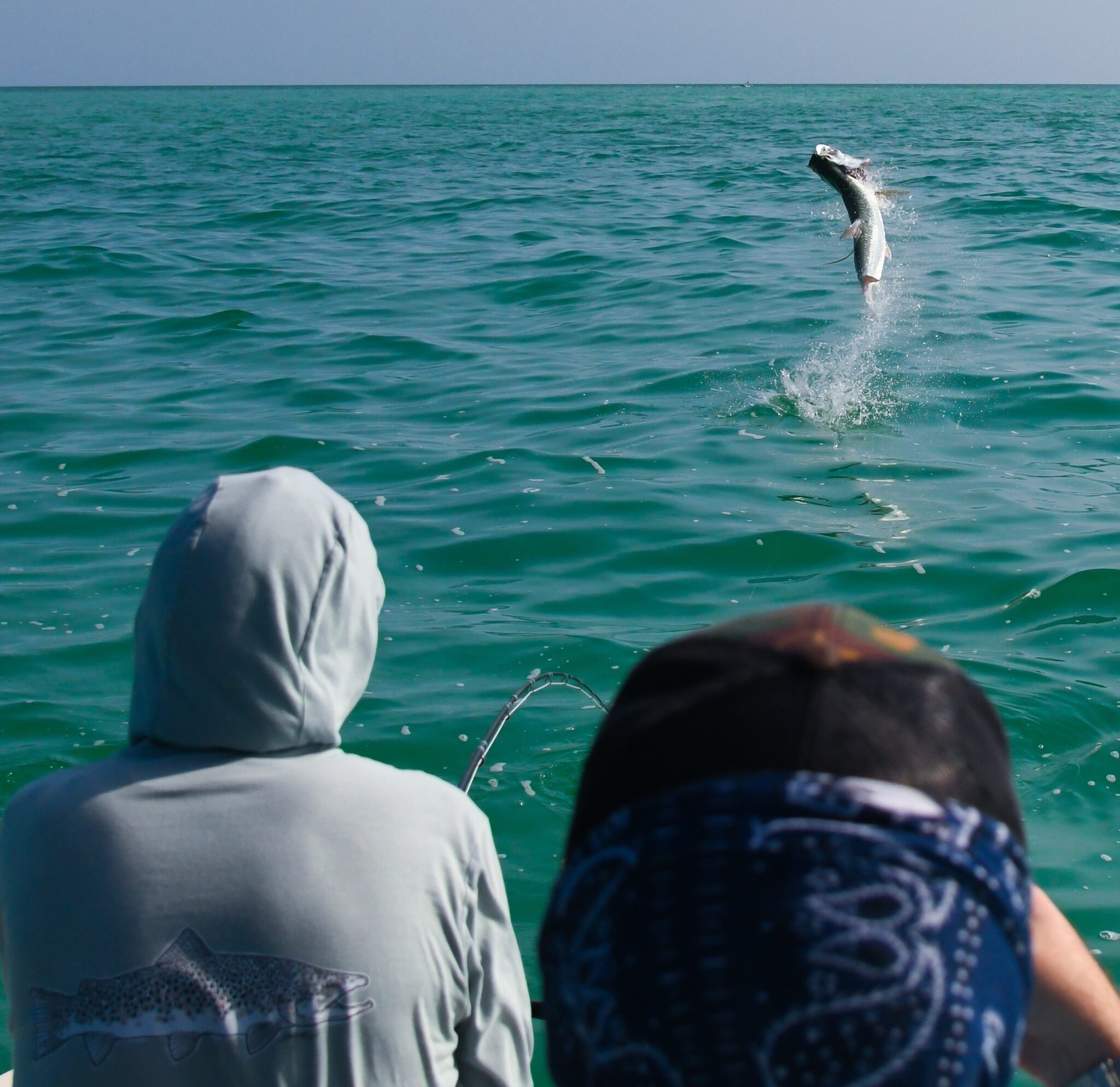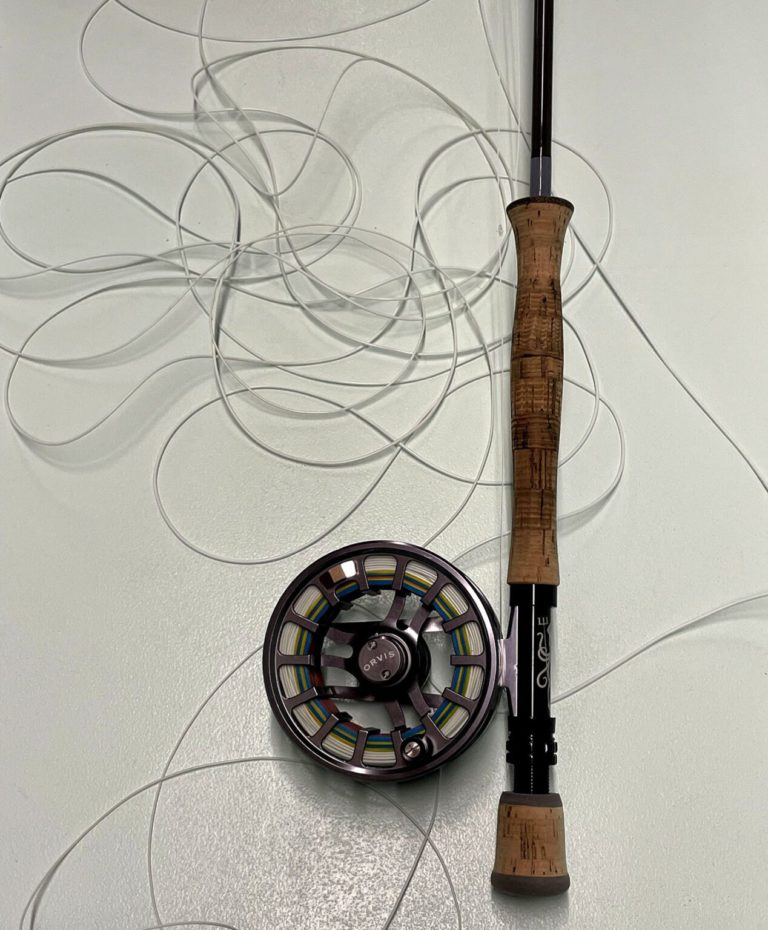My pliers were in one hand and a fly was in the other as I prepared to cut the leader and change flies. Pausing, I looked up to check with Capt. Kevin Wessel first.
“Tarpon coming at 11 o’clock,” he said. When I asked if I had time to change the fly, he shook his head “No.”
Stepping up to the bow, I saw the fish about 50 feet away and made a cast, leading them by about 10 feet. After pausing to let the fly sink, I put the rod’s cork handle under my arm and started stripping with both hands to bring the fly to “life.” Three strips later and the line came tight as the second tarpon in the string broke ranks to inhale the worm pattern.
I set the hook with a quick, sharp strip strike and moved the rod to my hands as fly line leaped from the deck, wrapping around my left hand in the process. Luckily, I was able to shake it free just as the fish bolted away from the boat.
This was a big, hot fish and his first run took all my fly line and about 150 yards of backing. The run was interrupted only briefly as the tarpon made a spectacular, head-shaking jump just feet from Mike Adno, a friend who was fishing from his boat just to the north of us. After the jump, the fish went around Adno’s anchor line and made a hard left, heading west. Fortunately, Adno was able to disconnect and release the line as I slackened my drag to prevent a possible break-off.
Looking back at Wessel, I suggested we chase the fish as I noticed that half of my backing had disappeared from the reel with no sign of the run ending. Quickly releasing the anchor, he started the motor and we followed as I furiously reeled in backing. When I had some fly line back on the reel, I started to work the tarpon, swinging the rod right, then left, applying maximum pressure and trying to throw the fish off balance.
This trip was turning out to be very rewarding on many levels. My friend Andy Grosso had won the trip in a raffle at the Compound Boardshop in Sarasota during the annual Fly-Fishing Film Tour event. Hosted by The Mangrove Coast Fly Fishers, the funds raised went to the environmental group Suncoast Waterkeeper.
After about 20 minutes and several jumps, I had the leader in the guides (considered a catch) for the fourth time when I applied additional pressure, parting the 16-pound class tippet (the weakest link). After high fives, I cracked a celebratory beer, and Grosso – who had jumped and broken off a tarpon earlier – stepped to the bow. Moments later, a distant rain cloud obscured the late afternoon sun, making spotting fish impossible until they were right under the boat. It was after 6 p.m., so we decided to call it a day.
Although it’s always hard to leave tarpon when they’re feeding, we had experienced a great day of fishing. Capt. Wessel had correctly guessed, based on over two decades of experience, that it would be an afternoon bite, coinciding with a strong outgoing tide. We had started at 1 p.m. and found schools of fish everywhere in super-clear water. It was beautiful to behold and good target practice, but it wasn’t until the tide was in full retreat that the fish began feeding.
In five hours, we had thrown at hundreds of tarpon, jumped two, landed one, and had multiple looks, leans and follows.
Capt. Wessel can be reached for charters at 941-915-9514. Check out his website and book.
Rusty Chinnis is the Outdoors columnist of the Anna Maria Island Sun and chairman of Waterkeeper Suncoast, an organization dedicated to the preservation of the coastal environment.



